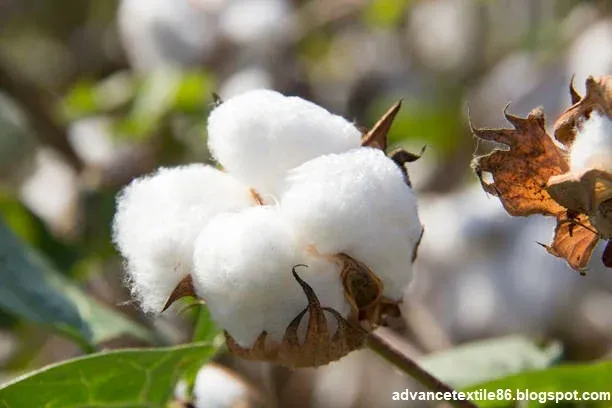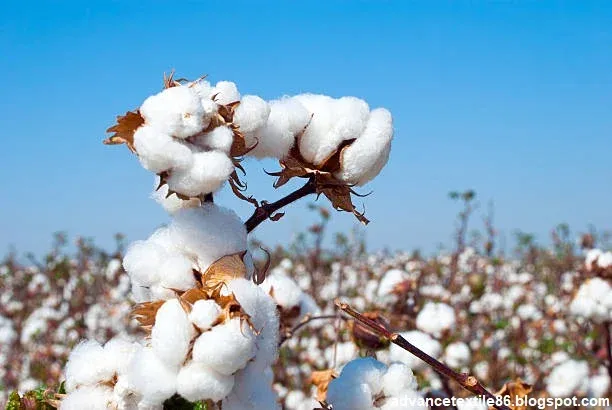Cotton fiber
This ancient crop has been used as the basis for textile products for many
centuries. There are about 50 species of cotton that are cultivated in
tropical and subtropical regions. However, in the case of clothing, the
quality of the cotton variety is far from equal. The value of cotton is largely
determined by its fiber length. The longer the fiber, the higher the quality
of the cotton. Some types of cotton fibers have short fibers while others have
long or even extra-long staple fibers (ELS). Yarn made from extra-long fibers produces
more durable and softer fabrics. High-street clothing uses mostly cotton fibers
that are short or medium length. And expensive luxury designer brands sometimes
use ELS as premium cotton for clothing like T-shirts. But this is not always
the case. A high price does not mean that high-quality cotton is always used.
How about extra-long-staple cotton fiber?
This
variety of cotton fiber was discovered in the British West Indies in the early
18th century. It grows in medium-sized trees that are tropical,
frost-sensitive, perennial, and require plenty of sun heat, high humidity, and
rainfall. To be classified as extra-long staple Cotton Fiber, the average length
of the fiber must be more than 35mm. As a result of ELS's long and strong
fibers, fabrics, and T-shirts are generally softer, more durable, and
ultimately longer lasting than conventional cotton varieties.
Different types of cotton fiber
Pima cotton
Pima
cotton is part of the Extra Long Staple Cotton family. It is considered one of
the best cotton varieties in the world. Nowadays, Pima cotton is mainly grown
in the United States, Australia, Peru, and Israel. As Extra Long Staple Cotton,
its fibers are long and it makes the fabric significantly softer and stronger.
In terms of clothing, it has luxury smooth fabrics that are resistant to
tearing, peeling, wrinkles, and fading. It is not surprising that many garments
are claimed to be made from pure Pima. However, the discovery of Pima poses
some challenges: Recent studies have shown that most Pima products are not
genuine and are often mixed with inferior-quality fibers.
Supima Cotton
Certified
Supima Cotton is guaranteed to be 100% American Pima without any substandard
cotton as part of the Weave. It differs from Pima, which is often interwoven
with low-quality cotton. The name Supima is actually a trademark that must have
been awarded in 1954 by the Supima Company founded in El Paso, Texas. The
trademark describes purity and quality. However, this does not mean that Supima
is a species of cotton different from American Pima.
Sea Island cotton
Authentic
Sea Island cotton is considered by many to be extra-premium. These cotton
luxury brands are widely used in the manufacture of garments. For this, Sea
Island cotton is definitely one of the rarest species in the world. Production
is limited but its quality and quality make Sea Island cotton so desirable to
the customer. Extra Long Staple Length, Remarkable Fiber Strength, Uniform and
Bright Laser. Sea Island cotton fans say that its durability, uniformity, and
lasciviousness make Sea Island cotton so desirable to the customer. It is worth
mentioning that not all species of Sea Island cotton are seen as of the same quality.
Barbados, Jamaica, and Antigua are the main producers of this rare cotton.
However, Sea Island cotton produced in Barbados is generally considered to be
the finest.
Egyptian cotton
Original
Egyptian ELS cotton is technically derived from cotton of the same cotton
species as other ELS cotton varieties such as Pima or Sea Island. However, it
has become the case that Egyptian cotton refers primarily to its source, not
its quality. It is called Egyptian cotton because it is found in Egypt. Most of
the cotton produced in Egypt can rightly be called Egyptian cotton, it is only
long staples, but not extra-long staples or ELS, meaning that the fibers are
shorter, weaker, and thicker than ELS cotton. Experts in the textile industry
further said that you do not know what you are getting when buying Egyptian
cotton.
A
2016 study found that 83% of 100% of Egyptian ELS-labeled tested garment products
were made entirely from other types of cotton. However, if you look for the
“real” Egyptian ELS yarn, you can enjoy a delicate and soft material on the
side of the Supima. The most well-known varieties of Egyptian ELS cotton are
Giza 45 and Giza 70, which are mostly used to make fine yarns and tear-wrinkle-resistant fabrics. Since the average fiber length of the widely used Giza 90
is slightly below 35mm, it is considered a long staple and is certainly not an
ELS.
Upland cotton
This species of cotton is commonly known as Highland Cotton or Upland. Gossypium hirsutum accounts for more than 80% of the world's cotton production. This type of cotton originally came from America. But now this variety is often cultivated all over the world. This species is the main supplier of cotton fiber shots in the global market. The height of the plant is 1.5 m and 2 m. The flowers are white to yellow in color and reddish in the dry state. Fiber shots are usually 20 to 30 mm. Due to the low cost of cotton of this variety, its yarn is usually used in "fast fashion" garments.
Asian short-staple cotton
In
terms of global market share, the second most important cotton is Gossypium
herbasium which is commonly known as Asian short-staple cotton. It is from
Southwest Asia that this variety originates. This cotton variety is mainly cultivated
in China, India, and Pakistan. Its fibers are short and thick and so this fiber
is inferior. This plant grows up to 150 cm in length. Its flower petals are
yellow in color and have reddish spots at the base.
Organic cotton
Organic
cotton itself is not a species of cotton but distinguishes itself by growing
organically through processes with less environmental impact. Plants cannot be
genetically modified in any way and only natural methods are used during
harvesting. According to the theory, most cotton varieties can grow organically
without the need for fertilizer pesticides. However, due to the limited use of
machinery and chemicals, raising organic cotton is laborious. India
(51%), China (19%), Kyrgyzstan (7%), Turkey, developing countries that produce
virtually all organic cotton (7%), and Tajikistan (7%) worldwide due to rising
labor costs.
As
a result, organic cotton is usually of significantly lower quality than mid or
short staples and extra-long or ELS cotton. This ultimately results in less
durable, more disposable clothing - raising the question of whether using
organic cotton contributes to more sustainability in the fashion industry.
















0 Comments